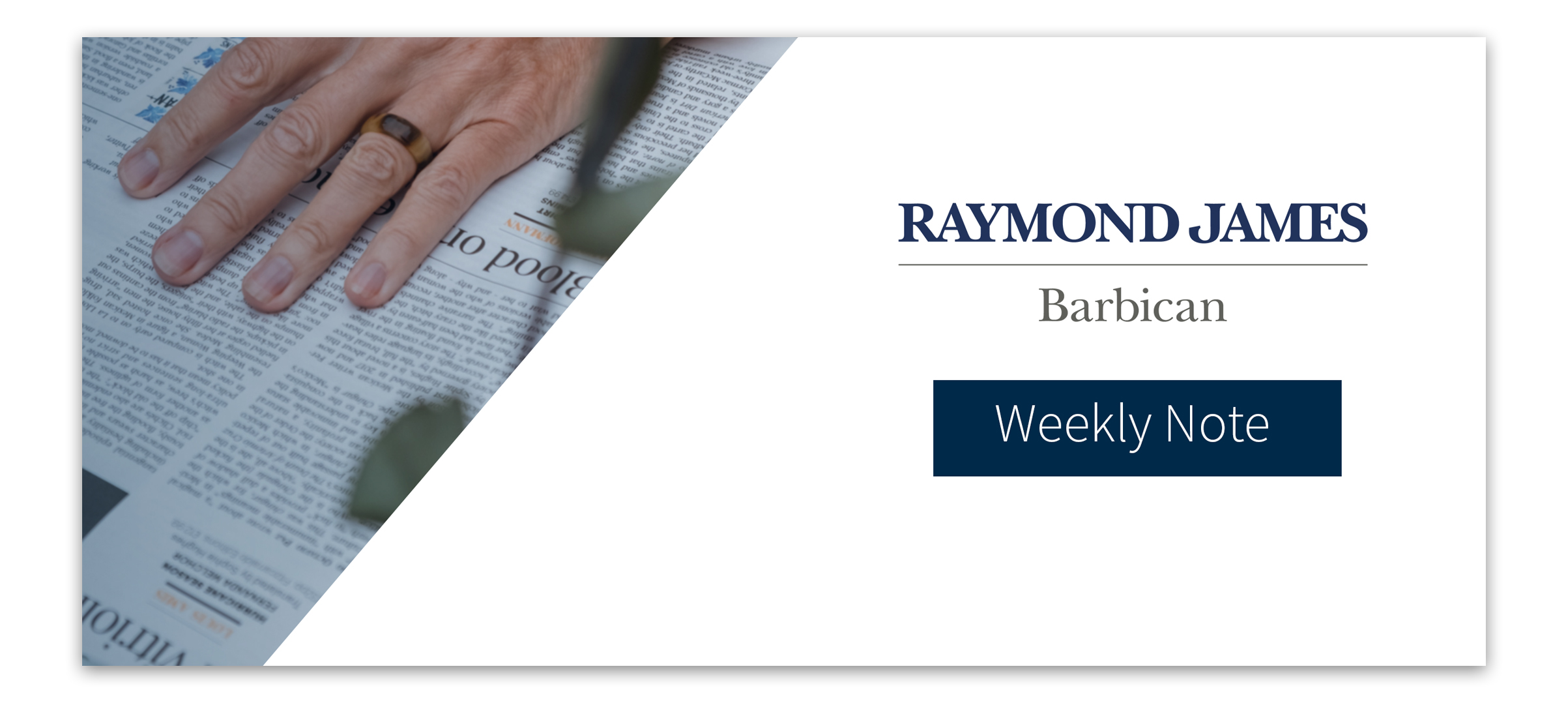This has been another tough week on a humanitarian front, and we want to continue to extend our thoughts and best wishes to everyone impacted by the Ukraine crisis. The purpose of the weekly note, as always, is to report on financial markets, which too have endured a difficult end to the week.
This week has seen heightened volatility across most asset classes as markets attempt to price in a prolonged Russian invasion and the associated risks this would create. As Simon Evan-Cook alluded to in yesterday’s monthly note, uncertainty is something that markets dislike, and uncertainty has increased over the last few trading days.
Safe-haven assets have generally rallied this week, albeit, with bumps along the way. At the start of the week, we witnessed significant falls in developed government bond yields (prices rise). The likely driver of this is the expectation of slower economic growth, which could deter central banks’ from raising interest rates at an aggressive pace. However, it is still likely that the US Fed will raise interest rates by 0.25% this month. Fed chair, Jay Powell, spoke to the House of Financial Services Committee and clearly showed his support for a modest interest rate rise in March to help curb inflation, while acknowledging it was too early to determine the economic impact of Russia’s invasion of Ukraine.
While government bonds and gold responded to the escalating conflict by rallying, equity markets hit more turbulent times, with big falls on Thursday and Friday (at the time of writing). French president, Macron, spoke with Putin for 90 minutes, with little success and it became clear a resolution was not close and there could be worse to come. While the sell-off has been broad-based, European equities have generally fared worse than US equities, which is a clear reversal from the trend in January and February this year.
The commodities sector looks poised to finish the week with its biggest weekly gain since the 1960’s. Brent crude oil briefly touched $119 a barrel this week, the highest level since May 2012. European and British gas prices pushed higher with the benchmark Dutch gas price hitting new all-time highs. Rising oil and gas prices will hit the consumer hard which will be a drag on economic growth and is something we need to pay attention to. Consumer balance sheets are generally robust given the ability of many to deleverage and save during COVID-induced lockdowns, however, higher energy prices could see this trend reverse. It wasn’t just oil and gas rising this week, copper hit a new all-time high while wheat prices have risen nearly 75% in 2022. Ukraine and Russia are two of the major exporters of wheat globally and their supply is likely to fall significantly.
As is customary for the first Friday of the month, US Non-Farm Payroll data was released. This is normally a key focus of the market; however, it has been left in the shadows by the geopolitical concerns. The data was very strong, showing 678,000 jobs had been added to the economy against the consensus of 400,000 and the unemployment rate fell to 3.8%. These numbers highlight the underlying strength of the US economy at present and will likely encourage the US Fed to raise rates later in March.
The backdrop of a Russia war makes it uncomfortable to be invested currently and will stir up a range of emotions for investors. While the cause of the concern is different this time, many of the emotions people are feeling will be similar to the initial COVID-19 crisis in March 2020, a period where uncertainty engulfed markets and assets sold off indiscriminately. With hindsight this was the opportune moment to actually be increasing risk. While we don’t want to take undue risks in portfolios, it can be helpful to look back to other crisis moments in history.
Andy Triggs | Head of Investments, Raymond James, Barbican
Risk warning: With investing, your capital is at risk. The value of investments and the income from them can go down as well as up and you may not recover the amount of your initial investment. Certain investments carry a higher degree of risk than others and are, therefore, unsuitable for some investors.

